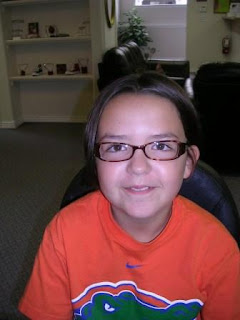
Yes! People with blurred vision, eyestrain, lazy eye, and/or double vision can use eye exercises to develop normal vision with depth perception and 3D stereovision. In fact, new research shows that supervised eye exercises can help people with lazy eye
after the age of seven.
Vision Therapy Is Effective Treatment..Vision Therapy Is Not Just Eye Exercises
Vision therapy -- a type of physical therapy for the eyes and brain -- is a highly effective non-surgical treatment for many common visual problems such as lazy eye, crossed eyes, double vision, convergence insufficiency and some reading and learning disabilities. Many patients who have been told, "it's too late," or "you'll have to learn to live with it" have benefited from vision therapy. In the case of learning disabilities, vision therapy is specifically directed toward resolving visual problems which interfere with reading, learning and educational instruction.
The first step in any Vision Therapy program is a comprehensive vision examination. Following a thorough evaluation, Dr. Jensen can advise the candidate as to whether Vision Therapy would be appropriate treatment.
In-office Vision Therapy is supervised by optometric vision care professionals and various types of treatment devices are used (and some are regulated medical devices), such as:
corrective lenses (regulated medical devices);
therapeutic lenses (regulated medical devices);
prism lenses (regulated medical devices);
optical filters;
eye patches or occluders
electronic targets with timing mechanisms;
computer software;
vestibular (balance) equipment
visual-motor-sensory integration training devices










